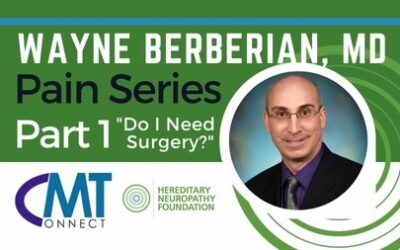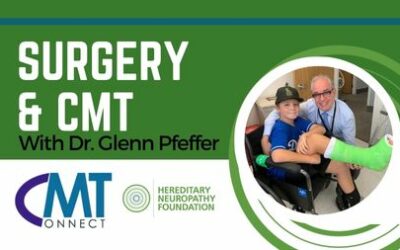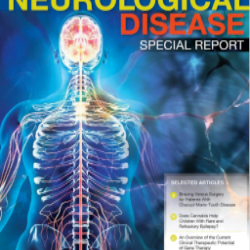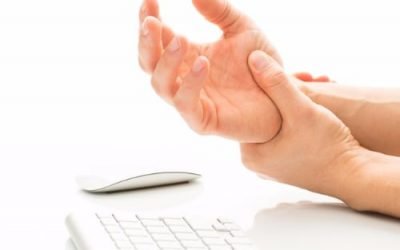HNF President Allison Moore met Dr. Steven C. Sheskier, New York-based orthopedic surgeon, after she broke her foot while on vacation. Due to her having Charcot-Marie-Tooth, she had many concerns about dealing with the break and with how her disease might affect the healing process (in her case, her recovery took longer than she had anticipated). Dr. Sheskier says that with CMT and other neurogenic diseases, the danger is that the patient is fooled into thinking his or her bone is fully healed when it is not.
First, Moore talks about how the accident affected her and below, we speak with Dr. Sheskier about the issue in the hopes of helping you know what steps to take and what to expect from your treatment, should you experience a similar situation.
Recalls Moore: “The worst part about breaking my foot has to be the inactivity for seven weeks. My CMT gets worse if I don’t exercise. I feel more pain, weakness and have a tendency to put on a few extra pounds. Because of my braces, I have a sense of being okay and manage pretty well. When something like this happens, the realitysets in that I do have a neuromuscular disease and I’m not in control. I feel that CMT is bigger than me. I feel guilty that I wasn’t more careful and that I’m doing too much. It is a fine line for me. I will not let CMT dictate my life. I try to do it all…I want to find a cure for CMT so I work very hard, I want my kids to experience as many fun things as possible regardless if I can do them (ice skating, rock climbing, etc.) so I push myself and I want to enjoy life to it’s fullest and not miss a step.”
A Doctor’s Perpective: Q&A with Dr. Steve Sheskier Dr. Sheskier is a prominent, New York-based orthopedic surgeon who specializes in treating foot and ankle problems, whether from accident, injury or disease. He is an assistant Clinical Professor of Orthopedic Surgery at NYU School of Medicine and New York Medical College. He is an active member of the American Orthopedic Foot and Ankle Society. He also is a consultant to the New York Rangers hockey team.
Over the years, he has witnessed first-hand the devastation that that neurologic issues can wreak on the foot. He says that a growing problem has been that of the neuropathic or insensate (unable to feel) foot due to diabetes, with symptoms ranging from mild neuropathic pain to ulcerations and deformities. He says, “All told, this can result in infections that can cause loss of limb and life.” It is for this reason that he helped found the Diabetic Foot and Ankle Clinic at The Hospital for Joint Diseases/NYU in New York City.
What are the first things a person with CMT should do if he or she falls, has an accident or feels that he has a break in his foot or ankle? Please describe. What are some of the things he should NOT do?
Dr. Sheskier: As with any injury the principles of first aid apply: Ice the affected area (use ice cubes in a bag with a moist wash cloth), then elevate to prevent further swelling. When in doubt, refrain from putting weight on the foot/ankle until you can get to an ER or doctor to be examined and get an X-ray. Since CMT has varying degrees of sensory nerve involvement, you may or may not experience pain in proportion to the extent of the damage. In cases of severe neuropathy swelling, bruising or deformity may be your only indication that your affected area should be looked into. As with all chronic conditions, denial can be an issue and it does not hurt if you are overly cautious, because the downside of an unattended fracture or dislocation can be devastating.
Once this person comes into your office, what can he expect to experience?
Dr. Sheskier: Hopefully, upon entering any MD’s office, you will experience compassion/concern and professional conduct by all you encounter. Usually you will be examined and X-rays taken. Some injuries do not “show up” on plain X-rays, such as compression fractures, which may require further studies such as a bone scan, CT scan or MRI, the later is good for determining if there are any soft tissue injuries (i.e. not bone), like tendons, ligaments etc.
How do you treat pain in the event of a bad break?
Dr. Sheskier: Pain of a fracture is treated by immobilization (cast/splint/brace), elevation (helps with “throbbing” pain due to swelling), ice (local anesthetic), over-the-counter drugs (Tylenol, Motrin, Aspirin, etc.), and non-narcotic prescription-strength NSAIDS and narcotic pain medications. Some people with peripheral neuropathy experience pain out of proportion to the injury or nerve pain and may require addition medications usually prescribed by a neurologist or pain-management specialist (Lyrica, Elavil and Neurontin to name a few). This type of pain is usually described as “burning…electric and/or radiating.”
Many people with CMT walk only with the assistance of braces. How do these devices affect the healing process?
Dr. Sheskier: Braces are helpful to maintain position (especially in the face of weakness), cushion the foot as it interfaces with the floor and increase function. In some more minor injuries, they can take the place of casts/splints.
If the patient normally wears braces, should he continue to wear them on his good foot while the injured foot is healing?
Dr. Sheskier: There is no need to discontinue bracing on the unaffected foot.
How long might a patient expect to be off his or her feet with a break such as Allison’s?
Dr. Sheskier: People with CMT can expect to see their fractures heal in the normal time for fracture healing, which is 6-8 weeks. High-energy injuries, such as sustained in car accidents, may take longer, especially if there has been an injury to the soft tissue/vascular system. The true problem with CMT and other neurogenic disorders is that the patient may feel that they are “healed” and start to go about their business before the bones have knitted and lead to non-unions (e.g. bone does not heal) or deformity. Hence, people with CMT, etc. are protected longer than a person with normal sensation to avoid this.












This article is of particular interest to me. I manage my CMT through movement. Just over two months ago I was knocked off my electric bike by a driver. It resulted in four broken bones and surgery to my ankle. From having a cast I now have a boot but I’m finding the most challenging part is learning to walk again. I have continued with chair cardio throughout as I believe movement is medicine. The other challenges are the lack of mobility, and isolation from pre incident. I was as active as I could be with swimming, gym, cycling, my goal is to return to that but I understand it is going to take a long time. It is an enormously challenging place to be and requires a considerable amount of positive mindfulness. Any guidance would be gratefully received kind regards Ros